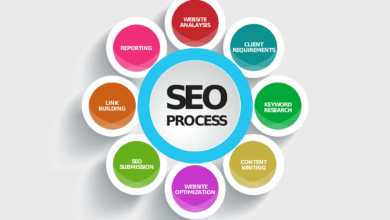3 Best Ways Call Center Can Improve Average Call Handling Time

Customers these days expect their brands to be prompt while delivering personalized customer support solutions. Whenever they make a call to schedule and reschedule appointments or share any query, they do not appreciate waiting in a long queue and struggling with irrelevant information. Such experiences lead to poor customer satisfaction, thereby creating a bad impression with the customers on their very first contact.
To avoid challenging situations, enterprises opt for call center outsourcing in USA that offers quality support solutions. Effective call centers monitor customer communications and evaluate the key performance indicators to monitor agent performances and maintain consistency in services. One such important KPI is the “average handling time” or AHT – a metric that directly impacts customer experiences by calculating the average amount of time it takes for an agent to resolve customer issues.
What is the average call handling time?
Average call handling time is the average customer call duration, usually measured from the time when a customer initiates a call to ending the call. This also involves call on-hold times, call transfers, conversations, and after-call work.
Moreover, AHT is a key performance indicator that helps optimize operational efficiency and agent effectiveness. By tracking the AHT and keeping it under a certain value, call centers can deliver prompt services while maintaining superior customer support solutions.
How to calculate average call handling time?
Modern call centers make use of a standard formula to calculate the average call handle time. The formula states the total time taken for customer interactions, calls on hold, and follow-ups divided by the total number of calls. That is:
Total (Customer interaction time + hold time + follow-up time) / Total number of calls
Suppose call center agents receive a total of 500 calls in a day. Additionally, a customer has 2000 minutes of interaction with a total hold time of 100 minutes and a total follow-up time of 500 minutes. Then, the average call handling time for the day will be –
AHT = (2000+100+500)/500 = 5.2 minutes.
What factors impact average call handling time?
Average call handling time depends upon multiple factors. These include team size and the efficiency of every agent in resolving problems, technology support, and caller inquiries. If all goes well, then call centers are more likely to experience good AHTs. On the other hand, poor average handling time can lead to poor customer experience and low satisfaction rates.
Therefore, an effective contact center in Canada or other countries always remains involved in improving the AHT. The lower the AHT, the better the CX. However, keeping the AHT low consistently can be pretty challenging.
How to improve average call handling time?
It is already stated that the average call handling time depends upon multiple factors. However, there’s very little evidence to demonstrate how one can work on these factors to improve the AHT. Let’s take a look.
-
Invest in quality training for agents:
The AHT metric smartly defines agents’ capabilities based on their performances. If the average handling time goes higher, it implies agents are inefficient in delivering prompt and quality solutions. Therefore, the best way to improve the AHT score is by conducting quality training programs for agents. Regular training and assessments help agents to boost their knowledge base and skillsets, thereby resolving customer problems in a short span of time. This eventually reduces call hold times and improves customer satisfaction.
-
Measure and analyze KPIs:
Enterprises opting for call center outsourcing in USA must consider agencies that believe in measuring and analyzing KPIs. An effective call center measures and constantly monitors the KPIs to understand agents’ performances and efficiencies. As a result, it brings clear insight into the areas of optimization, thereby helping agents make necessary improvements and provide more relevant solutions.
-
Make a note of common questions:
AHT increases when agents are unable to deliver prompt answers to customer questions. It increases call hold times, involves multiple call transfers, and eventually increases customer dissatisfaction rates. One way to prevent this is by making a note of common questions that customers may come up with. Actively listening to customer explanations can also help agents comprehend customer issues without repeated discussions.
Moreover, many modern call centers even leverage AI to help agents whenever they come across some set of common questions. Whenever a customer shares a query, the technology immediately finds out the relevant solution so that agents can deliver the same in no time. This is indeed the best way to avoid high AHT.
Lower your AHT to improve your customer experiences
Boosting customer experience and satisfaction is a major concern for every business. Many smart enterprises rely on call center outsourcing in USA or Canada to avoid this headache. This is because these outsourcing agencies make use of result-driven strategies to upgrade their customer support solutions. As a result, businesses find it easier to concentrate more on their core competencies and improve their bottom line.






